What Is Occupational Therapy?
Occupational Therapy promotes health by enabling people to perform meaningful and purposeful occupations such as self-care, work, play /leisure, domestic and community activities. Occupational therapists work with individuals, families and communities to facilitate health and well being through engagement in occupation.
Objectives of Occupational Therapy
- To provides support to people whose health prevents them from doing the activities that matter to them.
- To identify goals that can help people maintain, regain or improve independence.
- To enable people to participate in the activities of everyday life.
- To enhance people ability to engage in the occupations they want to, or are expected to do, or by modifying the occupation or the environment to better support their occupational engagement.
 |
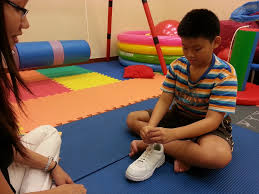 |
Who can benefit from Occupational Therapy?
Occupational therapy can be beneficial to people of all ages. As occupational therapists work with a wide variety of people, including children with developmental delays, individuals with emotional limitations, rehabilitation patients, premature infants and others. Conditions include:
- Orthopedics – Tendon injury, Fracture, Nerve Injury, Spinal Cord Injury and others.
- Medical – Amputation, diabetic, arthritis, heart problem, gout and etc.
- Neurology- stroke, parkinson, traumatic brain injury, multiple sclerosis and etc.
- Burn
- Plastic surgery
- Psychiatry- mental health problem (such as schizoprenia, bipolar mood disorder, depression, panic and etc.)
- Geriatric
- Pediatric – Down syndrome, Cerebral Palsy,learning disability, autism, hiperactive, Congenital Talipes Varus (CTEV) and etc.
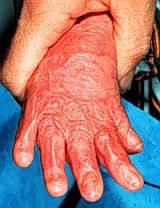 |
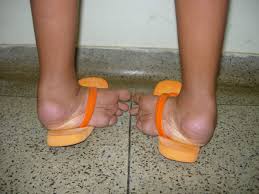 |
| Burn Case | Congenital Talipes Varus(CTEV) |
| Carpal Tunnel Syndrome | Mental Health Problem |
Occupational Therapists can help you
Working with children:
- Helping children achieve their developmental milestones such as fine motor skills and hand-eye coordination.
- Educating and involving parents, carers and others to facilitate the normal development and learning of children by various activities such as activities daily living training, social skills activities, sensory activities and others.
- Managing school dropouts due to poor attention spans, or reading and writing difficulties. For examples:
- A special chair to help you sit up straight.
- Self-opening scissors.
- Writing boards to help keep paper still.
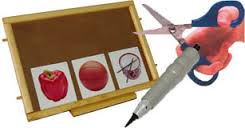 |
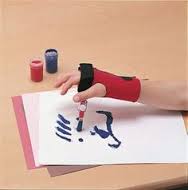 |
Rehabilitation and aged care:
Helping clients regain or enhance their daily lives after specific events such as hip replacement or stroke.
Assessing and modifying clients’ home and community environments to improve their safety and independence.
Prescribing and educating clients and carers in the use of adaptive equipment to assist function. For example:-
- After a hip replacement someone may find it difficult to get in and out of the bath. Grab rails could be fitted in the bathroom to make this easier.
- Someone with rheumatoid arthritis (a condition that causes pain and swelling in the joints) may find it hard to lift small objects. Special equipment, such as a wide and enlarge handled may be made available to make tasks easier.
- Discovering memory aids and other tricks for people who complain of poor memory due to aging, Alzheimer’s, stress, etc.
- Managing pain due to an automobile accident, burns, incorrect lifting, arthritis, repetitive strain injuries such as carpal tunnel syndrome and fibromyalgia.
- Providing pressure garment, splint or aids and adaptation for the burns person who has limited range of motion in managing daily activities.
 |
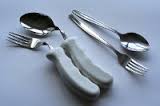 |
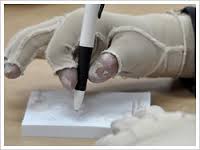 |
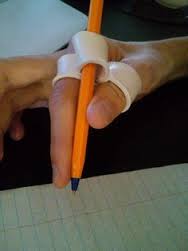 |
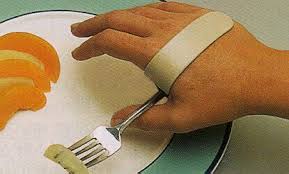 |
 |
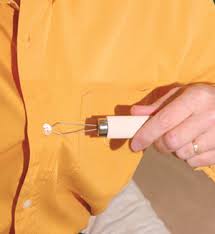 |
 |
- Can help someone continue play, leisure or recreation by providing equipment such as a playing cards holder, a grasping cuff to help you hold a pool cue or a racquet, or equipment with wrist stabilizer.
- Changes in the things you use to take care of yourself such as clothes with velcro ties, equipment that helps you put on your socks or stockings, built up handles on toothbrushes, forks, spoons, or knives to help you hold them, special bath or toilet seats and long handled and curved brushes for hair and bath.
- Changes in the things you use to get from place to place for examples, recommend wheelchairs, special seating and positioning for chairs to help sit right.
- Car modifications such as one-handed steering wheels or hand operated accelerators/brakes.
- Bicycles/tricycles modifications such as foot straps for pedals or seat support.
Injury management:
- Using specialised assessments to determine the functional requirements of various jobs, and clients’ capacity to return to work. For example, work injuries due to poor work station positioning, unrealistic pacing and other organizational and psychosocial strains.
- Designing and coordinating graded return to work programs.
- Educating clients in safe work practices.
- Modifying the work environment to suit the needs of individuals so as to prevent or minimise injuries.
 |
 |
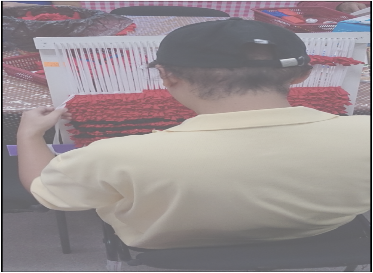 |
Mental health:
- Designing individual and group programs and activities to enhance clients’ independence in everyday activities.
- Developing coping strategies for clients in overcoming their mental health issues.
- Improving client’ s confidence and self-esteem in social situations.
 |
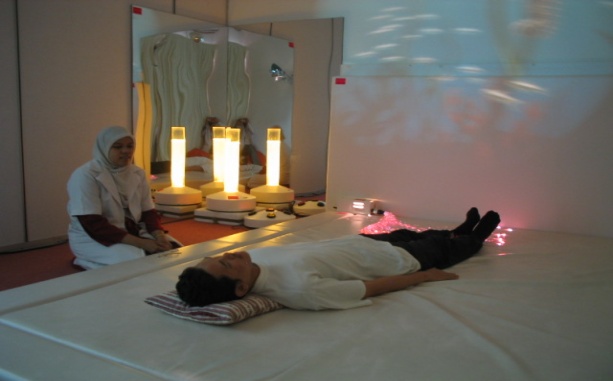 |
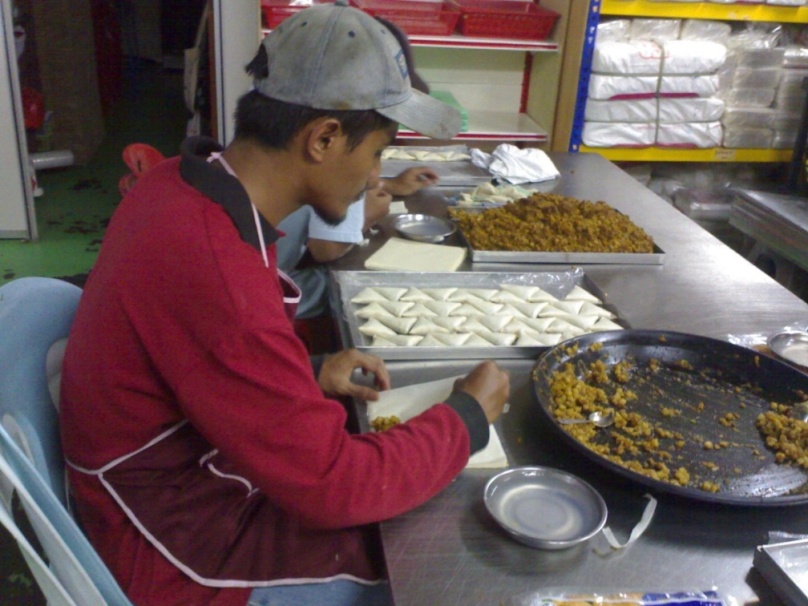 |
References:
- What is Occupational Therapy? .The American Occupational Therapy Association, Inc. Retrieved May 12, 2015 from http://www.aota.org
- How does occupational therapy help?(2015).Canadian Association of Occupational Therapists .Retrieved May 12 , 2015 from http://www.caot.ca
- Benefits of Occupational Therapy. (2015). Association of Occupational Therapy of Ireland. Retrieved May 12 , 2015 from http://www.nhs.uk
- Pictures: coded from google image
| Last Reviewed | : | 28 August 2020 |
| Writer | : | Pn. Jamilah bt. Abdul Kuthoos |
| Accreditor | : | Pn. Rokiah bt. Alias |
| Reviewer | : | Tan Foo Lan |







